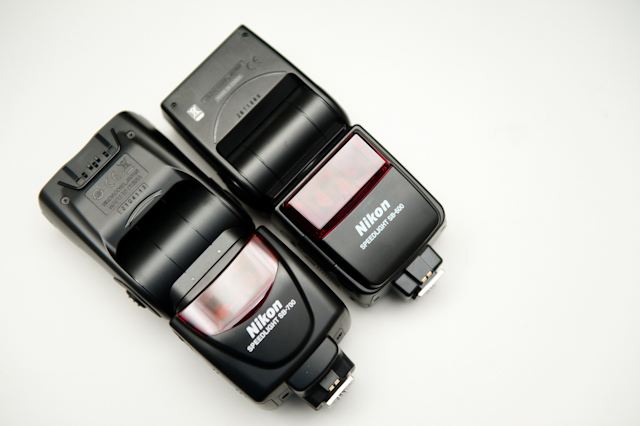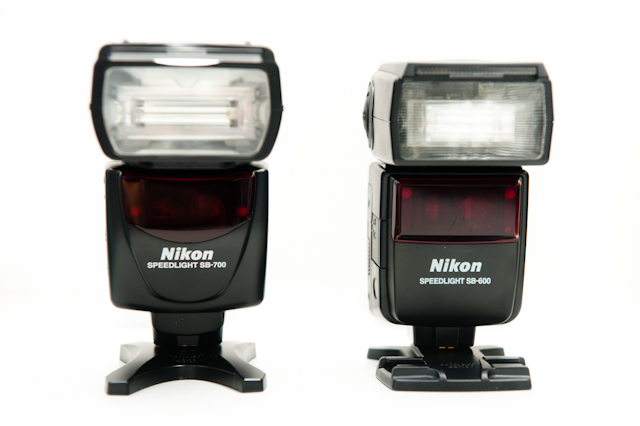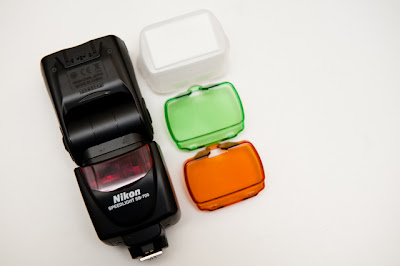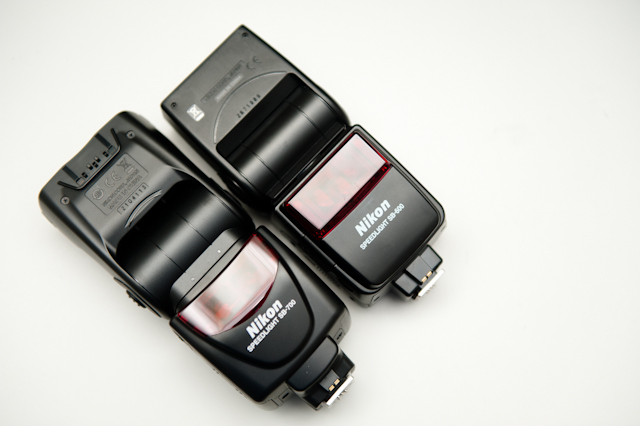If you like this post, help us share it
About half a year ago (Sept, 2010) Nikon introduced the Nikon SB-700 to replace the 6 year old SB-600 which was introduced back in 2004. The SB-700 has been very well received with many welcoming new features and improvements over the SB-600.
One its own, the SB-600 is a great flash; a GN of 30 and adequate swivel options which makes it ideal for general purposes as either a master or slave. I normally use SB-600 as slaves and find them great to use. It does its job perfectly via TTL or Manual and its light weight makes transportation much of an ease.
Now that the SB-600 has been replaced, does the SB-700 step up to its play?
First, I will be test driving the SB-700 in a few days and will have more updates on the blog soon.
For now my first impression – the SB-700 is a little bigger, back LCD menu and interface has been re-designed, similar to the SB-900. I find the new menu and interface much easier to use, it is much faster to switch between remote and master modes. Previously on the SB-600, you need to hold two buttons to get into the option menu to turn on/off the slave mode. Now, with the SB-700, you can simply turn the flash to OFF, ON, REMOTE and MASTER with a flick of the rotary switch. Brilliant !
Here is a side by side size comparison with the SB-600. You will notice there are several notches near the flash head for detecting the type of attachment.

Apart from the flash unit itself, the flash leg (AS-22) has also received a make over, the design is some how different, but a stand is a stand. The older SB-600 stand has three slots for the flash to slide through which is more convenient if you need to turn the sensor towards you.
The new back menu and interface is one of the many welcoming features on SB-700. There are dedicated rotary switches for REMOTE and MASTER modes. TTL and M modes can be toggled with a flick of a dedicated slide switch which makes operation much simpler. The dial is also a much nicer design than the old +/- buttons. The LCD has been upgraded to the dot matrix type with a bigger screen. From the below image, it can be seen that the head of the flash is slightly taller. 
The flash unit now has a–7 degree negative tilt, suitable for macro work and shoot through umbrellas. Also a 360 degree full swivel is now possible compare to only 270 degree from the SB-600. This gives a greater flexibility in bouncing your flash. While the head of the flash is slightly bigger, the GN has decreased from 30 (SB-600) to 28 (SB-700). For comparison SB-900 has a GN of 34 and SB-800 has a GN of 38. The SB-700 also comes with a built in bounce card like the SB-900.

In terms of accessories, apart from the flash leg and carry case that normally comes with all flashes, the SB-700 has stepped up a class. It also includes a snap-on diffuser, CTO and green hard colour filters. The carry case is of an unusual design, it is in a box shape which is more difficult to attach to a belt. However, everything is there nicely presented when you unzip the bag. From the bottom right image, you will also notice the sensor is now placed higher which is suppose to prevent your hand from covering it.




In terms of operation, there are a number of aspects need mentioning; an overheating protection to prevent the flash head from over heating is added. It suppose to slows down the recycle time once the flash is heated up. One of the biggest advantage of the SB-700 over the SB-600 is the new MASTER/COMMANDER mode which allows the master flash (SB-700) to control flash output levels for flash units assigned to two remote groups (three for SB-900), making CLS possible with SB-700. The SB-700 can be used as a Master or Slave.
One important aspect you will notice on the SB-700 is that Nikon has simplified the TTL settings in SB-700. Apart from waiving the D-iTTL and film TTL modes, iTTl-BL is now set to automatic, you can no longer switch between iTTL and iTTL-BL which usually confuses people more than being useful. Basically, if you have your in-camera metering set to “matrix” or “centre weighted”, iTTL-BL is used. If you use spot metering, then iTTL is used, which make sense I think.
Is SB-700 a good replacement to the SB-600? Yes, absolutely.
Should you replace your SB-600 with SB-700? Depends… As a slave flash, the SB-600 does the same job as the SB-700. You can’t expect much difference as a slave flash. However, the new MASTER/COMMANDER mode on its own is worth the upgrade. If you are buying your first set of flash and are keen to know what Nikon’s CLS can offer, go with the SB-700. The SB-700 is also much more travel friendly than the SB-900.
You can get yourself a nice Nikon SB-700 at B&H Video
Where can I find the equipment seen on this site?
If you find this site useful and planning to purchase any of the equipment seen on this site, please show your support by purchasing your photo equipment at B&H Photo Video, or through any of the affiliate links seen on this site.



Hi, I just purchased a SB-700. My camera is a D40x but I hope to upgrade someday, for now I am happy with this. Will the SB- 600 work as a slave to the SB-700? I would like to have a slave flash for portraits and for traveling to shoots. Thanks for the great review.
The SB-600 will work as a slave with the SB-700. the SB-700 is great for travel due to it compact size. Welcome to check out some off camera flash images using ther SB-700 here. https://www.kentyuphotography.com/blog/2011/05/nikon-sb-700-off-camera-flash/